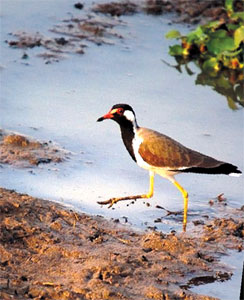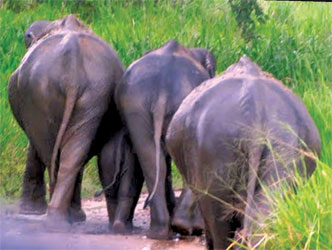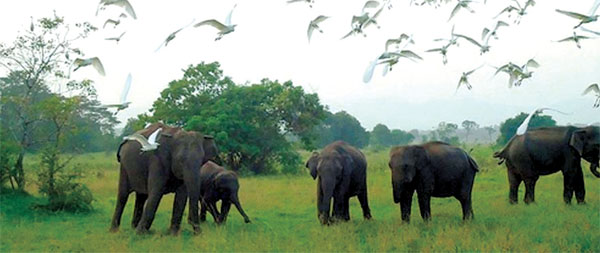The Wasgamuwa National Park
Barring the south, the Wasgamuwa National Park is almost entirely
encompassed by rivers. The eastern boundary is defined by the famous
long flowing Mahaweli Ganga, while the northern and western sides are
bordered by the Amban Ganga and Dunuwila Oya.
 The ancient tanks stand as evidence to the historical importance of
the Wasgamuwa National Park and the religious sites are part of the
story of Yudanganapitiya - the site where Sri Lanka's famous kings,
Dutugemunu and Elara, camped during their mighty battles, in the 2nd
Century BC. The ancient tanks stand as evidence to the historical importance of
the Wasgamuwa National Park and the religious sites are part of the
story of Yudanganapitiya - the site where Sri Lanka's famous kings,
Dutugemunu and Elara, camped during their mighty battles, in the 2nd
Century BC.
The Wasgamuwa National Park has a history of being the place to
observe the Sri Lankan Sloth Bear (a recognised subspecies of the Sloth
Bear).
The name Wasgamuwa is derived from the Sinhala word walas gamuwa
where walaha is bear and gamuwa means ‘the woods'. Due to the decline in
the number of the Sri Lankan Sloth Bear, the most commonly seen animal
on safari today is the Sri Lankan Elephant.
Fauna and Flora in the Wasgamuwa National Park
There are 23 species of mammals and 140 species of birds in
Wasgamuwa.The monkeys found in the park; the Purple-faced Langur and
Toque Macaque, are endemic to Sri Lanka.

The Water Buffalo and Axis Deer are also commonly seen here. There
have been Leopards and Sloth Bear sightings here, but they are quite
rare.
For bird lovers, Wasgamuwa is quite exciting. The endemic Red-faced
Malkoha and seven others have been recorded here.
The Lesser Adjutant, Yellow-fronted Barbet, and Sri Lanka Spurfowl
are the species that visit the reservoirs and streams at Wasgamuwa.
Other aquatic birds that can be seen on a birding safari are the
Peafowl, Painted Stork, Black-headed Ibis and the Eurasian Spoonbill.
The rarer Sri Lanka Frogmouth which appears to have no beak and the
Chestnut-winged Cuckoo have also been recorded here.
Of the 17 reptile species recorded in the Park, five are endemic. The
Water monitor and Mugger Crocodile are common as well. More than 150
plant species are found in the Wasgamuwa National Park.
Chloroxylon swietenia, Manilkara hexandra, Elaeodendron glaucum,
Pterospermum canescens, Diospyros ebenum, Holoptelea integrifolia,
Pleurostylia opposita, Vitex altissima, Drypetes sepiaria, and Berrya
cordifolia are dominant in the emergent layer of the forests while
Polyalthia korinti, Diplodiscus verrucosus, Limonia acidissima, Cassia
roxburghii and Strobilanthes stenoden are common in the other layers.
There is also a 1,700 year-old tamarind tree in Wasgamuwa.
- Internet
 |


